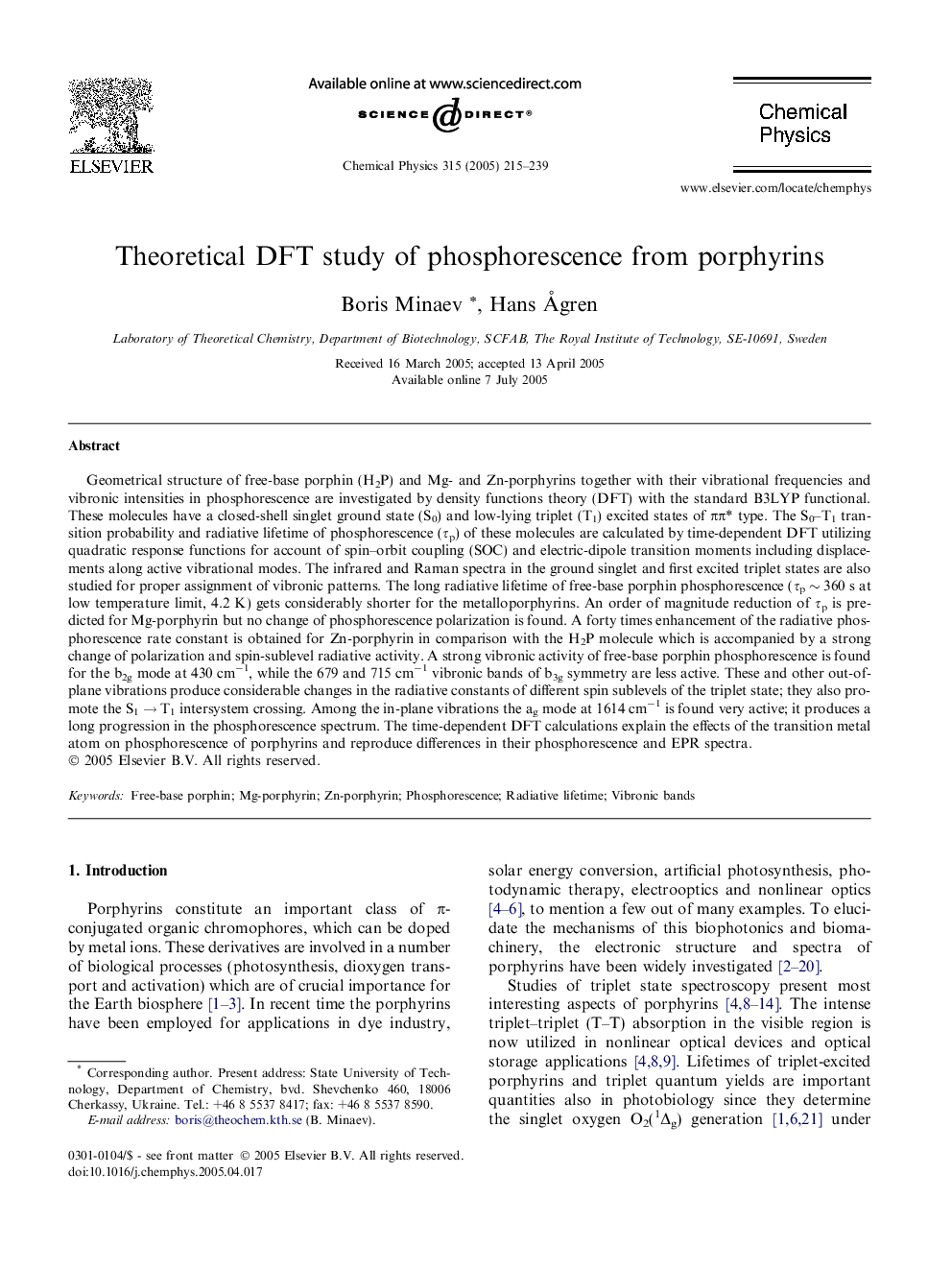| Article ID | Journal | Published Year | Pages | File Type |
|---|---|---|---|---|
| 9575197 | Chemical Physics | 2005 | 25 Pages |
Abstract
Geometrical structure of free-base porphin (H2P) and Mg- and Zn-porphyrins together with their vibrational frequencies and vibronic intensities in phosphorescence are investigated by density functions theory (DFT) with the standard B3LYP functional. These molecules have a closed-shell singlet ground state (S0) and low-lying triplet (T1) excited states of ÏÏ* type. The S0-T1 transition probability and radiative lifetime of phosphorescence (Ïp) of these molecules are calculated by time-dependent DFT utilizing quadratic response functions for account of spin-orbit coupling (SOC) and electric-dipole transition moments including displacements along active vibrational modes. The infrared and Raman spectra in the ground singlet and first excited triplet states are also studied for proper assignment of vibronic patterns. The long radiative lifetime of free-base porphin phosphorescence (Ïp â¼Â 360 s at low temperature limit, 4.2 K) gets considerably shorter for the metalloporphyrins. An order of magnitude reduction of Ïp is predicted for Mg-porphyrin but no change of phosphorescence polarization is found. A forty times enhancement of the radiative phosphorescence rate constant is obtained for Zn-porphyrin in comparison with the H2P molecule which is accompanied by a strong change of polarization and spin-sublevel radiative activity. A strong vibronic activity of free-base porphin phosphorescence is found for the b2g mode at 430 cmâ1, while the 679 and 715 cmâ1 vibronic bands of b3g symmetry are less active. These and other out-of-plane vibrations produce considerable changes in the radiative constants of different spin sublevels of the triplet state; they also promote the S1 â T1 intersystem crossing. Among the in-plane vibrations the ag mode at 1614 cmâ1 is found very active; it produces a long progression in the phosphorescence spectrum. The time-dependent DFT calculations explain the effects of the transition metal atom on phosphorescence of porphyrins and reproduce differences in their phosphorescence and EPR spectra.
Related Topics
Physical Sciences and Engineering
Chemistry
Physical and Theoretical Chemistry
Authors
Boris Minaev, Hans Ã
gren,
